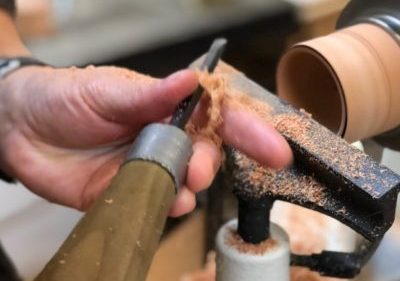Types of Lathes and Wood Turning Tools
I remember my father showing me how to turn wood on the lathe and other wood turning tools. He showed me the basics of how to hold the tools to create shapes. It wasn’t long before I was grabbing pieces of scrap wood, and turning something. I made a miniature ball bat. An oversized bullet. And very large pencil that actually wrote! (For the pencil “lead” I used the carbon from inside an old D-cell battery.)
Decades later, I acquired a vintage lathe and fixed it up with new bearings and a motor. I played around with it and quickly realized I was missing out on a lot of fun! Someone once said that there is no other tool in the workshop that can take a piece of firewood and create something beautiful inside of an hour. Using the lathe can be addictive. So much so that I’ve know woodworkers that have sold all of their tools except the band saw and purchased good-quality lathes. It’s that much fun.
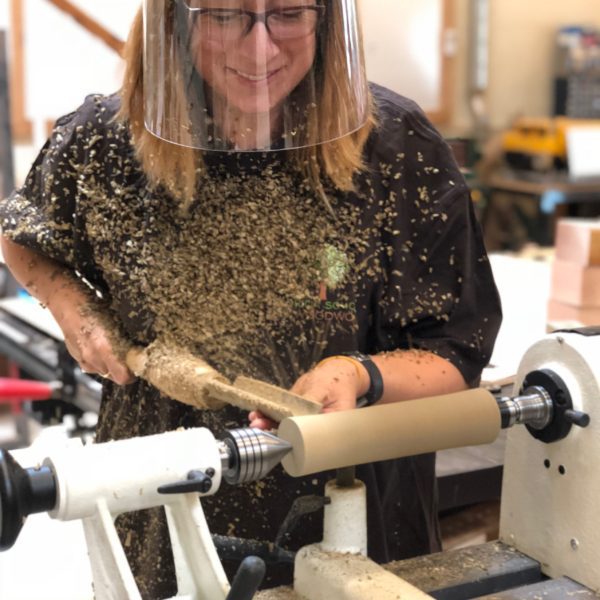
Parts of a Lathe
A lathe is a simple wood turning tool. It consists of a metal bed with “ways.” The ways hold the headstock and tailstock. The headstock is the motorized portion of the lathe at one end of the bed. The tailstock is at the opposite end of the bed. The workpiece is held between the headstock and tailstock. As the motor on the headstock turns, the lathe operator uses any of a variety of tools to shape the wood. A tool rest positions the tool in relation to the workpiece and the operator uses it to guide the tool when cutting.
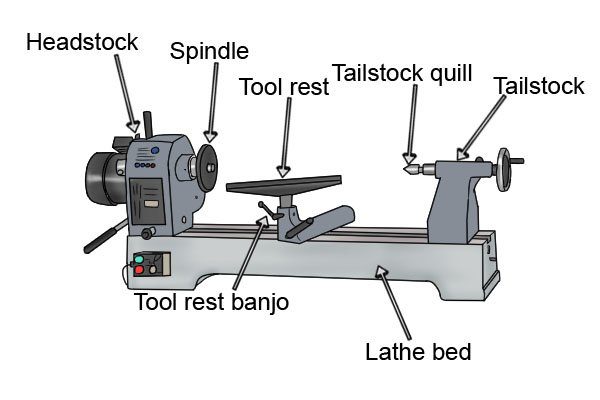
Lathe Sizes
There are several types and styles of lathes in a variety of sizes. There are large lathes with powerful motors that are designed for turning large-diameter pieces 2 to 4 feet in diameter. Some can turn large posts up to several feet long. More modest lathes for home shops typically have a bed length to turn a spindle up to 3-feet long. Hobbyists and pen-makers will generally use what’s called a “midi” lathe. The smaller lathes fit on a benchtop or on a stand and don’t take up a lot of floor space. We have several of them at the Florida School of Woodwork.
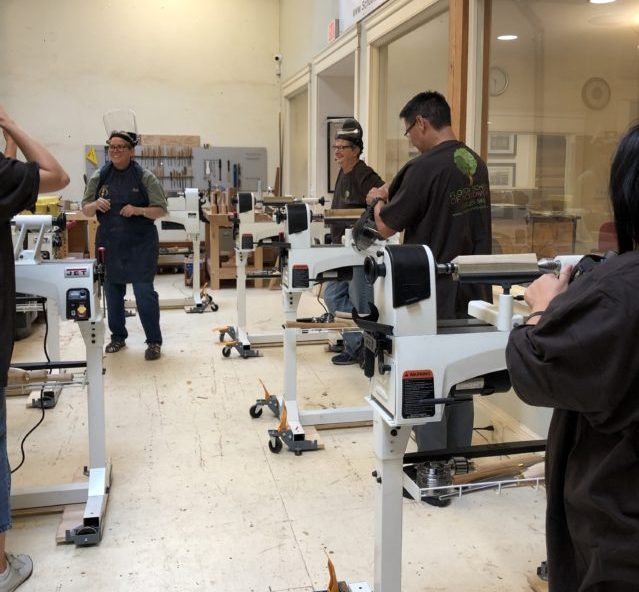
What is Swing?
When shopping for a lathe, you’ll see terms like 10” swing. Or 10” x 15” when referring to the size. The swing is the maximum diameter you can turn on the lathe. The second number, if it’s listed, is usually the maximum length of piece you can turn.
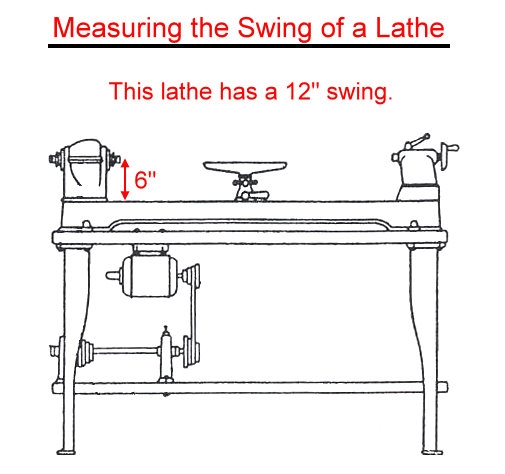
All lathes feature some method of changing the speeds. The larger the diameter turnings usually demand slower speeds. Some lathes require you to move a belt on stepped pulleys in order to change the speed. The disadvantage of this is that you have to turn off the lathe to do this. Most models of lathes have the option of a variable-speed motor. With this type of lathe, the speed is controlled by a knob at the front of the lathe. It directly affects the speed of the motor and can be adjusted “on the fly” as the lathe is spinning. If you anticipate doing a lot of turning, you’ll want to spend a little extra for the variable-speed option.
Lathe and Wood Turning Tools Basics
As for lathe tools, (wood turning tools) there are a variety of types and sizes, each designed for a specific task, like turning coves and beads, shaping bowls, and a variety of other cuts. The cutting edge is at one end. A long handle is used by the operator to help secure and guide the tool.
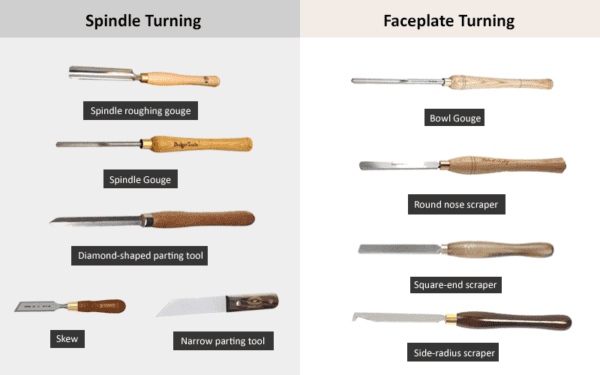
The best way to learn what all of these wood turning tools do and how to safely operate a lathe to create your first turning, it’s best to attend one of our many turning classes at the Florida School of Woodwork. You’ll learn from professional turners the proper tips and techniques to get perfect results.
But there is a downside to taking one of our turning classes- you’ll get addicted to turning and want to go purchase your own lathe.

